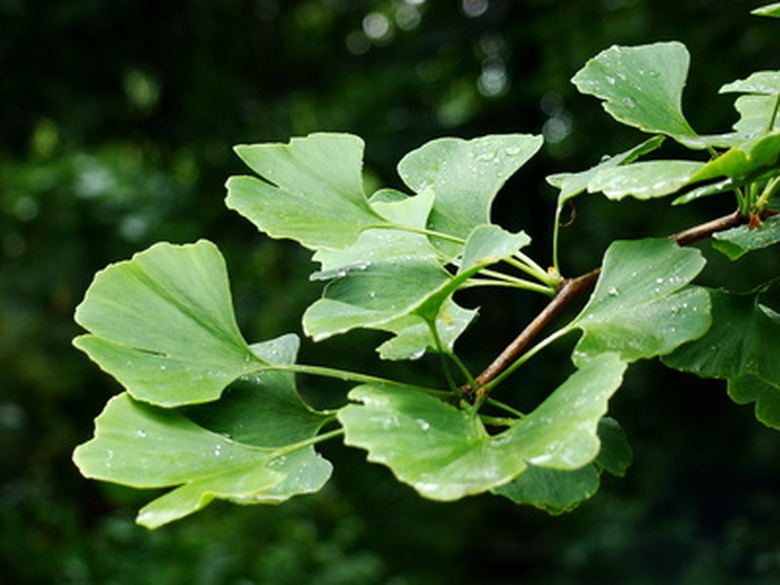Life Cycle Of Ginkgophyta
Ginkgophyta is one of four divisions of plants within the non-flowering plant group that produces seeds called gymnosperms. The maidenhair tree (Ginkgo biloba) makes up the only member but is closely related to conifers and cycads. These slow-growing deciduous trees are dioecious, being either fully male or female in gender as determined by their flowers. They do not begin flowering until over 40 years of age.
Germination
The small, silvery-white seed of the ginkgo germinates when soil conditions are favorable: frost-free temperatures and moisture. It sends down an initial tap root one leaf from this seed embyro.
Growth
Like other trees, the ginkgo sapling elongates its branches and produces flushes of new fan-shaped foliage each growing season, shedding them each autumn. It develops a singular upright trunk with upward-angled and horizontal branches. In its young the tree shape is column-like but then beomes more oval and wide-spreading.
- Ginkgophyta is one of four divisions of plants within the non-flowering plant group that produces seeds called gymnosperms.
- Like other trees, the ginkgo sapling elongates its branches and produces flushes of new fan-shaped foliage each growing season, shedding them each autumn.
Sexual Reproduction
Ginkgo does not "flower" until about 40 years old; the tree's gender is revealed once either only male catkins occur or tiny pairs of female ovules are produced in mid-spring. The male catkins or cones gently dangle downward from the woody branch spurs where leaf clusters grow. On female trees clusters of bare, exposed ovules also dangle from branch spurs. After pollen sheds, the male catkins wither and drop from the tree.
Seed Development
Pollen is shed and carried by the wind to reach the receptive ovules. The pollen sticks to a tiny viscous cavity on the female ovule called the pollinic room. This room seals shut after pollination and the pollen germinates, releasing spermatozoids. These sperm freely swim in the gel to then fertilize the ovule. Unfertilized ovules drop from the tree while those fertilized develop into pale-colored seed surrounded by an enlarging flesh coat filled with butyric acid. By late autumn the plump, translucent apricot-colored flesh reeks with a horrific odor, perhaps alluring birds and other critters to eat and carry the seed inside across the landscape.
- Ginkgo does not "flower" until about 40 years old; the tree's gender is revealed once either only male catkins occur or tiny pairs of female ovules are produced in mid-spring.
- Unfertilized ovules drop from the tree while those fertilized develop into pale-colored seed surrounded by an enlarging flesh coat filled with butyric acid.
Death
As long as the ginkgo trees remain healthy, sexual reproduction among male and female trees occurs annually. These plants grow relatively slowly, and reach considerable size (40 to 60 meters) and age before degrading and then dying. Commentary on The Gymnosperm Database's entry for this species suggests it can easily grow over 200 years. Death is marked by branch die-back and diminished capacity to flush new foliage in spring. Depletion of food-making leaves slowly weakens the organism.
